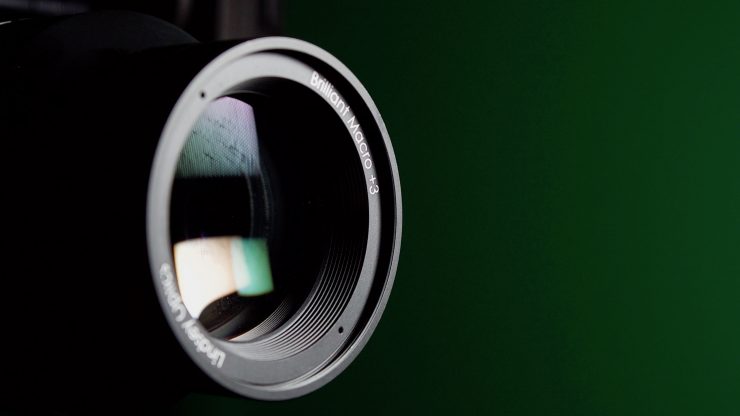
Diopters and Macro lens attachments are a nice addition to any cinematographers arsenal. Often overlooked or ignored altogether, diopters and macro lens attachments are a unique way of expanding the capabilities of lenses you may already own or use.
What are diopters?
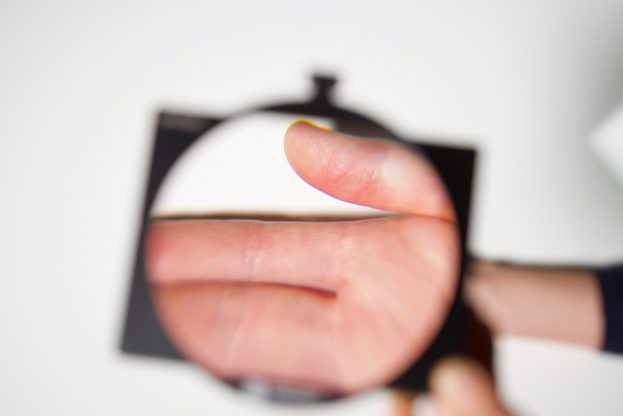
Diopter filters are just like a magnifying glass for your lens. They also shift the minimal focus distance so you can get macro shots without having to use a macro lens. They can be used to increase the magnification of a lens when you need to get really close-up images of small objects. While not a true macro lens, they are lightweight and quick to use with standard cine matte boxes and filter holders. Diopters come in varying strengths with +1, +2 and +3 being the most common.
The concept of “dioptre” was first introduced by a French Ophthalmologist in 1872. Internationally the word is still spelled “dioptre”, but in the US and some other English speaking countries its spelled “diopter”
The most common type of close-up lens is a plano-convex lens. This lens is flat on one side and convex on the other side. These are relatively simple and cheap to make even in large sizes. The problem is, plano-convex reduce resolution and worst of all, introduce lots of chromatic aberrations. Smaller diameter plano-convex with magnifications as large as +10 are available in the photographic market, however, as I just mentioned image quality penalties are severe. For cinematography, you really don’t want to use anything greater than a +3 diopter. If you want to use something with a greater strength than +3 you should be looking at a macro lens attachment instead.
Lindsey Optics
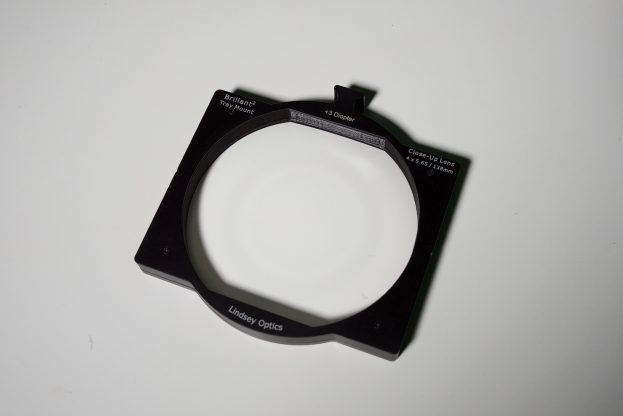
One company making diopters is California based Lindsey Optics. Lindsey Optics is run by Dwight Lindsey, who has 38 years in the Optics business and was recently C.E.O. of Schneider Optics. Lindsey Optics makes two different types of diopters- the Brilliant² Tray Mount “Close-Up” Lenses and the 138mm Brilliant Diopters – Round Drop-In.
Both the Brilliant² Tray Mount “Close-Up” Lenses and the 138mm Brilliant Diopters (Round Drop-In) come in values of +1/4 diopter, +1/2 diopter, +1 diopter, +2 diopter, and +3 diopter.
The Brilliant Diopters are simple plano-convex magnifying lenses manufactured to the highest standards specifically for cinematography. They fit in cine matte boxes and there are a variety of clamping adapters to attach 4.5″ Round Diopters directly to cine lens barrels.
Each of the close-up lenses has a focal length expressed in millimeters however for convenience the focal length is expressed in “diopters”, which is simply the reciprocal of the focal length in meters. It’s simple to convert from focal length in millimeters to focal length in diopters. The diopter value is the reciprocal of the focal length in meters. So:
1/1 Meter = 1 Diopter
1/0.33 Meters = 3 Diopter
1/2 Meters = 0.5 Diopter
1/4 Meters = 0.25 Diopter
So when used by itself as a single element lens, a close-up lens with a power of +1 Diopter will focus an image at about 1 meter.
These diopters magnify the field of view, ranging from a slight bump in size for small objects if you use a +1/4 diopter, all the way up to a more exaggerated field of vision if a full strength +3 diopter is used. The lenses are constructed from what Lindsey Optics claims to be the “finest” optical glass. They feature broadband, multi-layer, anti-reflection coatings.
Brilliant² Tray Mount “Close-Up” Lenses
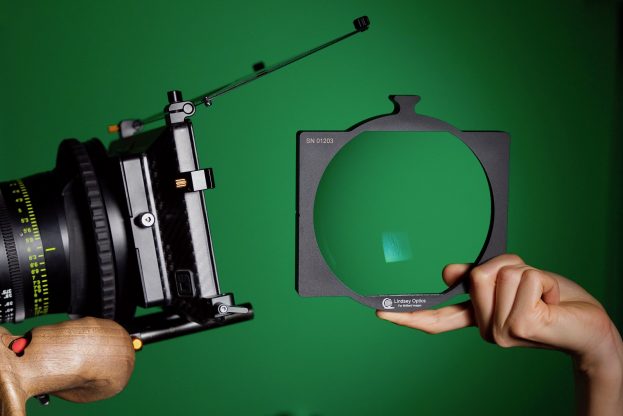
Thet Brilliant² Close-Up lens system is built around 138mm diopters that have been permanently mounted in proprietary Brilliant² 4″ x 5.65″ trays. This allows you to easily use them in any matte box that can take 4″ x 5.65″ filters. Using diopters is a nice way of getting closer focus with the lenses you already have without having to purchase a dedicated macro lens or use a more expensive macro attachment lens.
The thing you need to be aware of is that a diopter will only focus your image at a certain distance. It doesn’t work like a dedicated macro lens where you can focus from very close all the way to infinity.
Build quality
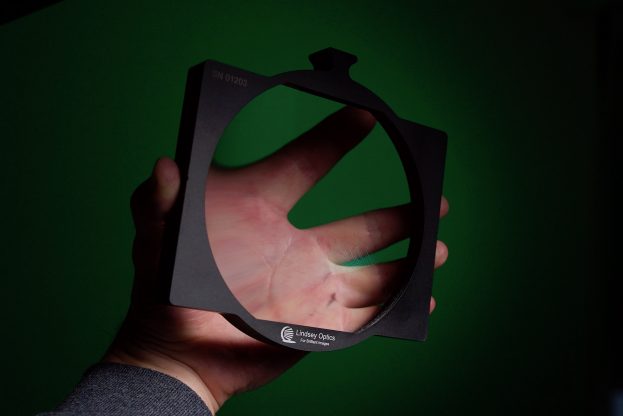
The Brilliant² Tray Mount “Close-Up” Lenses are pre-installed in 4″ x 5.65″ trays and they can’t be removed. The trays are really well made and easily slide inside your matte box.
How do they perform?
I tested out the various strengths of diopters in a Bright tangerine Misfit matte box. Now, unlike Macro attachment lenses, the diopters can be used with just about any lens. That’s not to say that they work the same way with every lens. They certainly work a lot better with longer focal lengths or lenses that don’t have a great MOD (Minimum Object Distance).
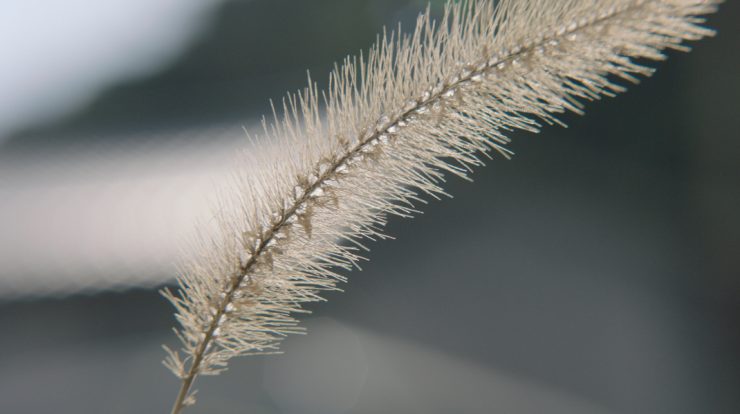
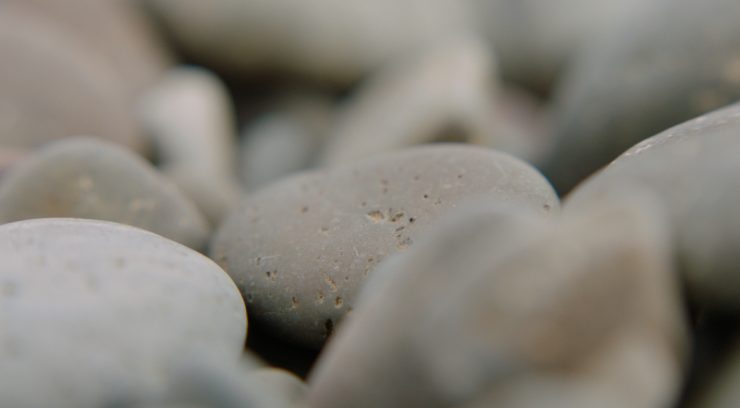
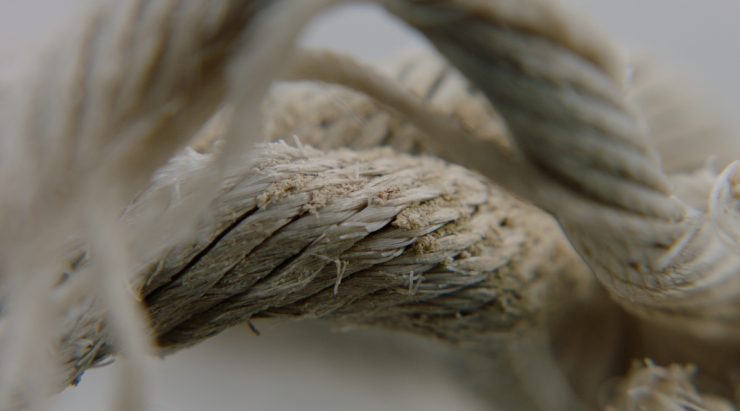
I found that I was able to get some really nice tight shots without any noticeable effect in sharpness or image quality. Above you can see some frames that I was able to capture with a TLS Morpheus 80-200mm T2.8 PL zoom lens and a Brilliant² Close-Up +3 diopter filter. These are shots that are not normally possible to do with this lens. The Morpheus has a MOD of 4.9 Feet/1.5 Meters. By using a +3 diopter I could reduce the lenses MOD quite dramatically.
138mm Brilliant Diopters (Round Drop-In)
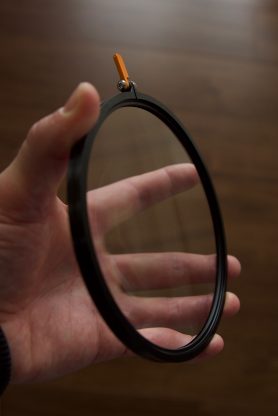
The 138mm Brilliant Diopters (Round Drop-In) are exactly the same, except they don’t come pre-installed in 4″ x 5.65″ trays. These Round Drop-In versions can be used in matte boxes such as the Bright Tangerine Misfit Atom Pola+. If you are using +1 diopters in the Misfit Atom Pola+, one additional 4×4” or 4×5.65” filter can also be mounted into the frame. If you are using a +2 diopter, no additional filters can be mounted due to the thickness of the diopter. A +3 diopter can be used with the Misfit Atom Pola+ using the rubber bellows donut or Black Hole.
I tried out the Lindsey Optics 138mm Brilliant Diopter +1 in the Bright Tangerine Misfit Atom Pola+. This diopter worked really well and it is nice to be able to reduce your lenses close focus ability without sacrificing optical quality. The diopters really make a big difference on longer focal length lenses that traditionally don’t have very good close focus ability.
Prices
The Brilliant² Tray Mount “Close-Up” Lenses retail for $550 USD and the 138mm Brilliant Diopters (Round Drop-In) are $475 USD.
Macro attachment lenses
Macro Lens attachments don’t have any of the image quality issues that accompany single plano-convex diopters. Macro lenses are every bit as sharp as the cine prime or zoom that you attach it to and don’t exhibit any chromatic aberrations. Lindsey Optics makes a range of these lenses called Brilliant Macro Lens attachments.
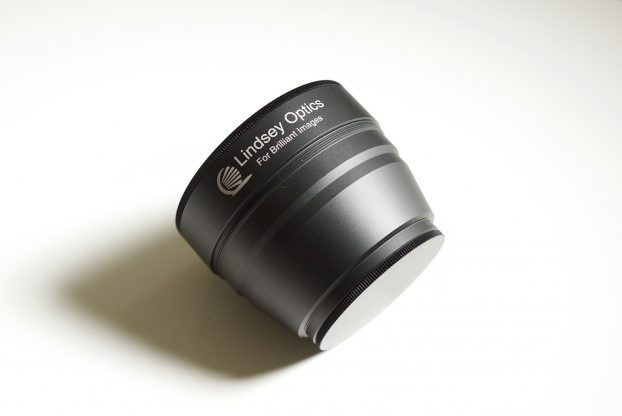
Brilliant Macro lenses can be stacked to achieve even greater magnifications, without sacrificing image quality. If you stack a Brilliant Macro Lens +2 and a Brilliant Macro Lens +3, the resulting combination has an optical power equal to +5 Diopter, with very high-quality optical performance.
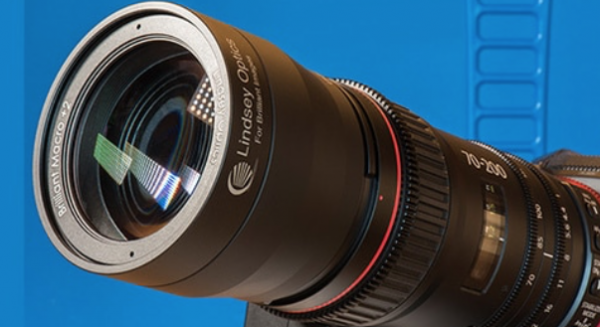
They can be used with both cine primes and compact zoom lenses. The Brilliant Macro Lens attachments support full-frame optics at up to 36 x 24mm. They can be used on Zeiss, Cooke and Schneider Optics, as well as prime lenses with focal lengths between 50mm and 100mm.
Lindsey Optics Brilliant Macro Lens attachments work with the following lenses:
ARRI/FUJINON Alura Zoom 30-80 (from 50-80mm)
Canon Compact-Servo 70-200 T4.4
Canon Cine-Servo 17-120 (40-120mm)
Canon CN-E 50mm
Canon CN-E 85mm
Canon CN-E 135mm
Cooke 5i 50mm
Cooke 5i 75mm
Cooke 5i 100mm
Fujinon MK 50-135mm T2.9
Fujinon XK 20-120 T3.5 Cabrio Premier (from 50-120mm)
Rokinon Xeen 50mm T1.5
Rokinon Xeen 85mm T1.5
Rokinon Xeen 135mm T2.2
Schneider Cine-Xenar III 50mm
Schneider Cine-Xenar III 75mm
Schneider Cine-Xenar III 95mm
Schneider Xenon FF 50mm
Schneider Xenon FF 75mm
Schneider Xenon FF 100mm
Sigma 50-100 Compact Zoom
Sigma 50mm T1.5
Sigma 135mm T2 S
Sigma 85mm T1.5
Tokina 50-135mm T3 Zoom
Tokina 50mm T1.5
Tokina 85mm T1.5
Leica Summicron-C 50mm
Leica Summicron-C 75mm
Leica Summicron-C 100mm
Leica Summicron-C 135mm
Leica Summilux-C 50mm
Leica Summilux-C 65mm
Leica Summilux-C 75mm
Leica Summilux-C 100mm
Zeiss Ultra Prime 50mm
Zeiss Ultra Prime 65mm
Zeiss Ultra Prime 85mm
Zeiss Ultra Prime 100mm
Zeiss Ultra Prime 50mm LDS
Zeiss Ultra Prime 65mm LDS
Zeiss Ultra Prime 85mm LDS
Zeiss Ultra Prime 100mm LDS
Zeiss CP2 35mm/T2.1
Zeiss CP2 50mm/T2.1
Zeiss CP2 85mm/T2.1
Zeiss CP2 85mm/T2.1
Zeiss CP2 135mm/T2.1
Zeiss CZ 70-200 Compact Zoom
Build Quality
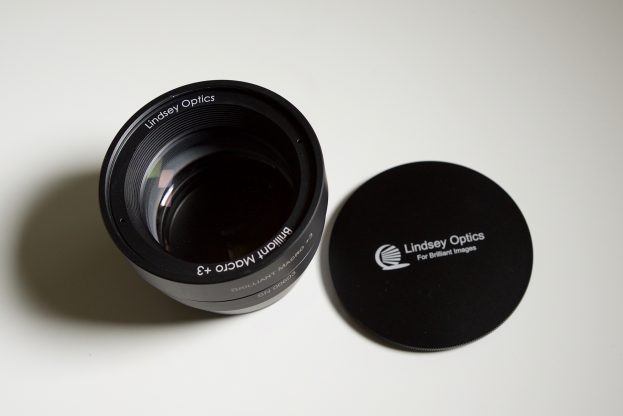
The Brilliant Macro Lens attachments are beautifully made. They come front and rear metal lens caps that screw on.
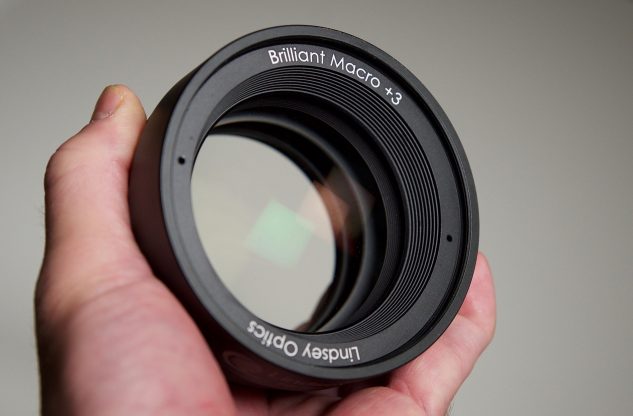
They certainly have a bit of weight to them. I independently weighed them in at 900 g (31.75 oz). This is something you certainly need to take note of when using a Macro Lens attachment as it is going to add extra weight to your lens and depending on what lens and lens mount you are using, you may have to use a lens support.
How do they attach to a lens?
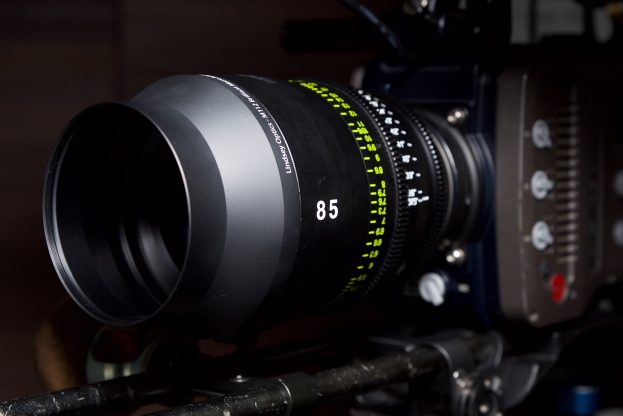
To attach a Brilliant Macro Lens you need to use a Lens Adapter. The Lens Adapter lets you attach Brilliant Macro Lenses to compatible prime and zoom lenses. Lindsey Optics provides two ways of doing this:
Clamping Adapters: These are for 80mm, 95mm, and 104mm lens barrels
Threaded adapters: These are for 77mm, 82mm, 86mm, 100mm, 105mm, and 112mm lens barrels
If you want to use multiple Brilliant Macro Lenses, you can do so through a Stacking Adapter.
How do they perform?
I tested out the Brilliant Macro Lens attachments on my TLS 80-200/T2.8 Morpheus zoom (which isn’t actually on the list of lenses that work). That lens only has a MOD of 4.9 Feet/1.5 Meters, but if you attach any of the Brilliant Macro Lens attachments you can drastically reduce that distance. By adding an adapter I was suddenly able to increase my lenses versatility and use it for shots that I wasn’t able to previously get.

I also tried them with my Tokina Vista Primes with the use of an M112 Brilliant Macro Adapter. The Macro Adapter screws onto the front of the Tokina Vista Prime.
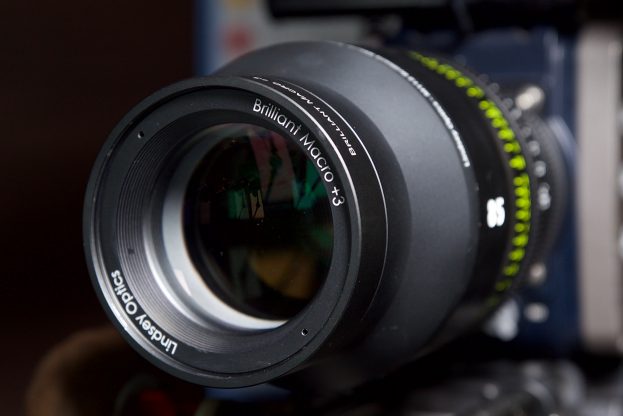
You screw the Macro lens onto the adapter. This all works seamlessly and everything fits securely.
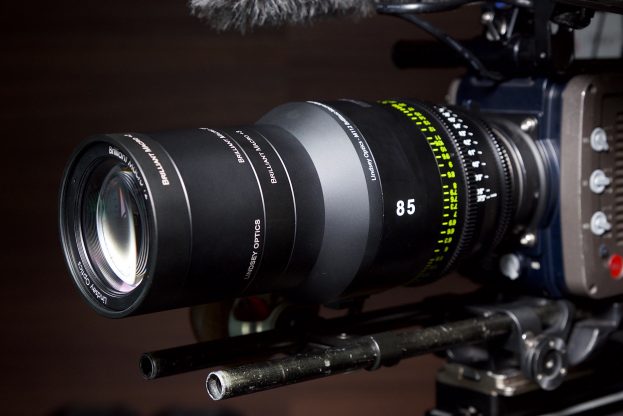
If you want to stack multiple Micro Lens Attachments you can do so with the Stacking adapter. I tried this out and it works really well. It’s amazing how close you can get a lens to focus by stacking a +3 and a +2 Macro Lens Attachment.
The thing you do need to keep in mind is that by adding the adapter and the Macro Lens you are significantly increasing the size and weight of your lens (especially if you start stacking Macro Lenses). While this isn’t a massive problem, you may need to use longer rods if you are running a matte box.
To my eye and from close examination of the images, the optical quality didn’t seem to be affected in any way when using the Macro Lens attachments. The image still remained sharp and none of the characteristics of the lens were removed or altered. This is a nice aspect of using a macro lens attachment. It allows you to maintain a consistent look across your footage.

Normal MOD of the Tokina Cinema Vista 105mm T1.5 
+3 and +2 Lindsey Optics Macro Adapters 
+1 Lindsey Optics Macro Adapter 
+2 Lindsey Optics Macro Adapter 
+3 Lindsey Optics Macro Adapter
Above you can see just how much closer you can make your lens focus when using the adapters. These examples were shot on the Tokina Cinema Vista 105mm T1.5.
The thing you need to be aware of is that a macro lens attachment will only focus your image at a certain distance. It doesn’t work like a dedicated macro lens where you can focus from very close all the way to infinity.
Price
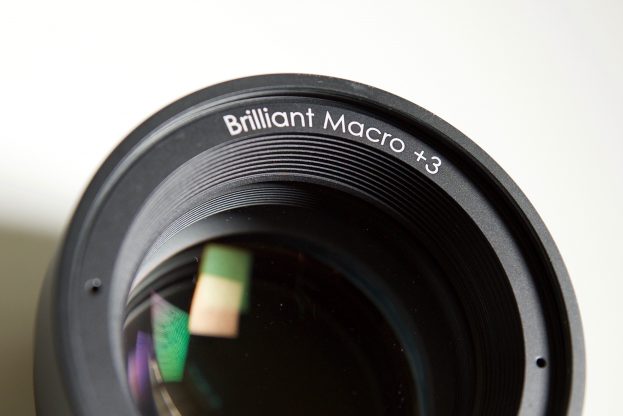
The Brilliant macro Lens attachments are available in strengths of +1.+2, and +3. They retail for $1,500 USD, or a three lens set with a carrying case is available for $4,500 USD.
A steep price to pay
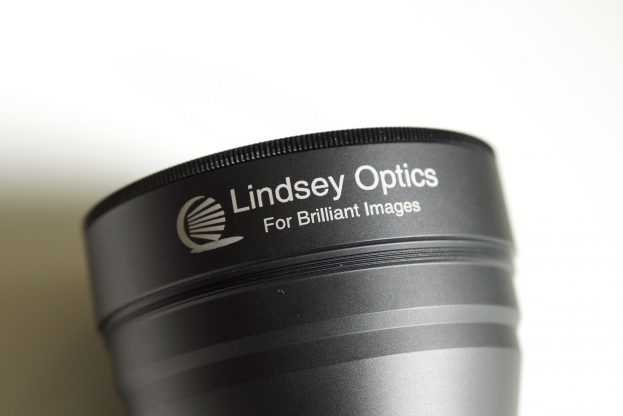
Any type of custom, low quantity optical product is always going to come with a steep price tag. High-quality macro lens attachments and diopters are certainly not cheap, but if you own lenses that cost tens of thousands of dollars then you will probably be able to justify the price.
Conclusion
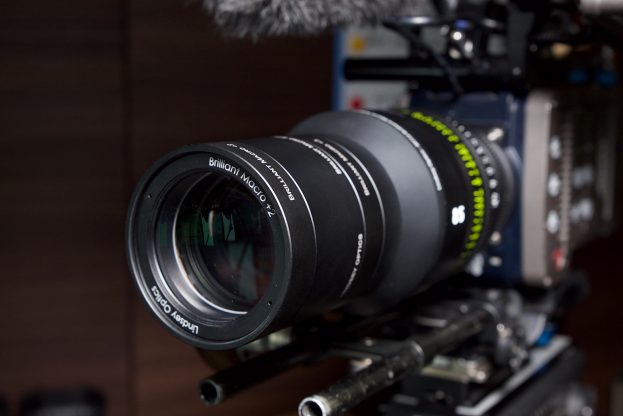
The Lindsey Optics Brilliant macro Lens attachments are well made and they are optically very good. They are a nice way of increasing the versatility of lenses you already own, but they certainly won’t be for everyone. If you own lenses that only cost a few thousand dollars then it is not really going to make any sense spending almost the same amount on a macro attachment lens. They really only make sense if you want to increase the versatility of expensive lenses you may own or rent. In saying that, the quality of the optics being used is extremely good and you don’t sacrifice any image quality when using them.
The caveat that you really do need to keep in mind is that both the diopters and macro lens attachments only have a quite narrow focus plane and they won’t be as versatile as a dedicated macro lens.
If you can’t justify the price of a macro attachment lens then a Brilliant² Tray Mount “Close-Up” Lens is a better option. If you already own a matte box this is not a bad option for getting your lenses to focus a little closer.





